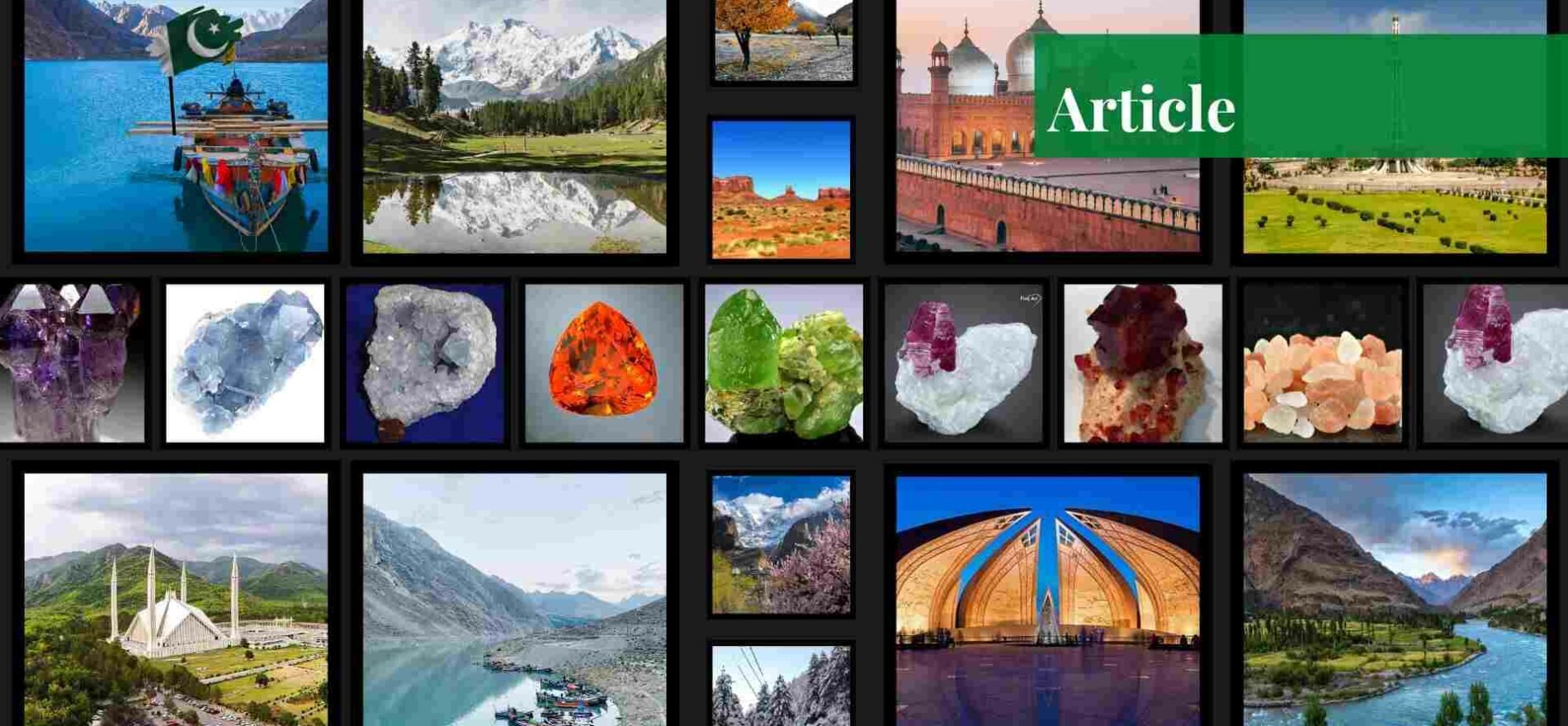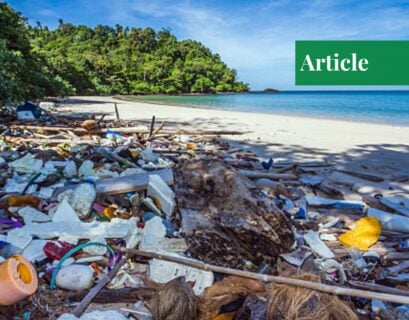Ms Zainab Haseeb is studying IR at Kinnaird College for Women, Lahore. She has previously participated in WWF's eco-internship.
Significance of the Mineral Resources of Pakistan
Pakistan is one of the most resource-rich countries in the international political economy. The state is known for its rich weather that includes four seasons, distinct geographical features, and of course, the abundant resources of minerals and metals that it possesses.
Due to its rich geography, it not only receives heavy tourist traffic, but also favors processes such as metallurgy and mineral extraction that add to its position in the international market. Pakistan’s mineral sector contributes a surprisingly small share of its GDP. Estimates vary slightly, but it generally falls around 2.5% to 3%. This is far below the potential of the sector, considering Pakistan’s reserves of copper, gold, coal, and other valuable minerals.
Untapped Mineral Resources
Mineral resources stand to hold great significance for the future of Pakistan. These naturally occurring nonrenewable and renewable resources contribute greatly to the economy. They are spent for commercial consumption as well as manufacturing products in different setups of industries. In recent times, where there are international commitments such as the Sustainable Development Goals, the appropriate use of these resources is very important.
Economic giants such as China are very much interested in investing in Pakistan because of the incentive to profit from the country’s natural wealth and to shift energy investments from coal to renewable resources. Even Saudi Arabia has shown keen interest in Pakistan’s mining sector; the Saudi vice minister for mining affairs Al-mudaifer said Pakistan has $6 trillion estimated worth of mineral deposits.
Hence, these minerals act as a prospect for international investment rendering the state relevant in the international political economy. These investments could create job opportunities for people in the state and contribute towards a speedy growth of employment. However, to ensure that, the state must be focused on the controlled use of resources hence it needs responsible resource management.
Core Mineral Resources
Mineral deposits are unevenly distributed around the Earth and can be found in different countries. There are even countries that are based entirely on barren lands and have no considerable deposits whatsoever.
For Pakistan, the case is quite intriguing as the state is rich in metallic as well as non-metallic minerals such as copper, iron ore, chromite, rock salt, gypsum, limestone, sulphur, marble, coal, gold, gemstones, etcetera. All of these possessions are an indication of strong geographical qualities for any state. Another important feature to acknowledge is that some of these minerals are located in non-accessible locations in the state and still haven’t been extracted.
Coal
Pakistan has abundant coal reserves for the purposes of both fuel and energy. In total, Pakistan has around 185 billion tonnes of coal reserves. The measured ones are around 3.45 billion tons, the indicated ones are around 12 billion tonnes, and the inferred reserves are around 57 billion; the hypothetical ones are around 113 billion tons. The coal that is extracted in Pakistan has high sulphur and ash content.
Due to the weather in Sindh, the coal, especially that from Thar, has a high moisture percentage. The different small quantities of coal are used for the purpose of generating electricity and in domestic settings. However, the percentage of usage that exceeds all is that of the coal used in kilns for producing fire for the bricks.
It is estimated that if the coal resources in Pakistan are properly utilized, they can generate around 100,000 MW of electricity in the next 30 years. Some investment projects of coal in Pakistan include a coal-fired alternate energy power plant, a coal washing plant, and a coal briquette plant.
Copper
Copper is another very important resource in Pakistan that is found in great quantities. Copper is usually found in sulfides, oxides, and carbonates. Usually, the extraction process calls for mining a lot of rocks to obtain an adequate amount of copper content. Rocks are known to contain around 2% copper which makes them valuable in terms of their economic worth.
The copper industry is what provides the best conductors and fulfills the need for domestic cooking supplies such as utensils. In Pakistan, it is found in Chaghi, Sandak, Reko Diq, Qalat, Lasbela, and Zhob in Balochistan. Chaghi and Lasbela remain important copper producers of the world.
Gold
Pakistan has significant gold deposits which remain one of the most important metals that set the standard of currencies in the world. Pakistan has gold resources worth billions of dollars. The major gold mines in Pakistan are located in Chaghi district in Balochistan. The Reko Diq copper-gold deposits are an important find in Pakistan that is being termed as the largest reservoir with an estimated 1200 tonnes of gold out of which 255 tonnes are proven. The Saindak gold and copper deposits range from 83 to 63 tonnes of proven reserves.
Iron Ore
Iron ore is one of the top five minerals that are found in the country. Pakistan is known to have an estimated 1.427 billion tonnes of reserves of different grades. The Kalabagh iron reserves are one of the largest reserves that the country possesses with around 350 million tonnes. The 500 million tonnes of iron ore deposits were discovered in Chiniot in 2015. Moreover, 60-65 pc of these discovered reservoirs were called high grade. These reserves remain of great economic significance, and it is said that the annual iron ore production in Pakistan remains low in comparison with the internal needs of the state.
Moreover, the Pachin Koh-Chigendik iron order deposits are located in the town of Nokindi in the district of Chagai, Balochistan. The deposits are linked with the Sanjrani volcanic, and these ores are made of magnetite and hematite. The different geological inspections reveal that the amount of mat will exceed 100 million tonnes if more efforts are made in order to explore more iron ore resources. The ores discovered in Balochistan are tested to have compatibility with the steel mills industry in Pakistan.
Gemstones
Pakistan inhabits a wide variety of gems some of which are extremely prominent minerals around the world including peridot, aquamarine, topaz of various colors, emerald, ruby, bastnaesite, xenotime, sphene, tourmalines, and other types of quartz. The Gemstones Corporation developed in 1979 dealt with the extraction, exploration, and utilization of those stones and called for facilitating the mining capabilities in Pakistan. The corporation was liquidated in 1997.
Now, matters are dealt with by the Trade Development Authority as well as the All-Pakistan Commercial Exporters Association of Rough and Un-Polished Precious and semi-precious metals in Pakistan. This remains a potential and untapped market that hasn’t been explored yet by potential international buyers. The concentration of these gems is mostly found in the Northern Areas, Khyber Pakhtunkhwa, and Balochistan.
Gypsum
Another significant mineral resource is gypsum which is found in high quantities in Khyber Pakhtunkhwa. Around 92 percent of Pakistan’s gypsum is found in KPK and it is estimated to be 5.5 billion tonnes. The province comprises around seventy mines which produce 4.2 million tonnes per year.
This resource remains of such significance because it supports an industry manufacturing a wide range of products including plaster, plaster boards, soil conditioning gypsum power, cement, dental plaster, orthopedic applications such as bandages and gauze, gypsum lamps, and other decorative products made from gypsum.
Chromite
Chromite is another important mineral resource that is used for manufacturing stainless steel, paint, nichrome, and other chemicals in Pakistan. The resource has a wide utilization when it comes to the industrial needs of the state. In Pakistan, deposits of chromite are found due to the outpouring of molten material on the tectonic plates. The discovery and documentation of the resource began in the 1960s in Pakistan. However, the reports did not have any authentication when it came to estimation.
Chromite remains an export-oriented resource of Pakistan. Since 1903, it has been exported from this region to other countries. The export earnings from the 1997-98 period and then the 2001-2002 period differed from Rs 168 million to Rs 404 million. These export earnings can be improved if high-grade chromite is produced and sold in the international market which has an increasing demand for it. However, in the case of Pakistan, this might be tricky as Pakistan imports chromite chemicals. With the addition of projects in the state, the indigenous ore can manage to meet the domestic requirements, but it requires careful resource management and planning.
Conclusion
From the above statistics, it can be deduced that Pakistan remains a state with a high concentration of mineral resources. However, these resources can be amplified to empower the economic growth of the state. Not only that but the resources also require careful handling to ensure a sustainable use of them to avoid their depletion.
Any unaccounted exhaustion can lead to the expiration of the commodity which is against the SDGs set forward by the United Nations. Pakistan must realize that in order for the state to progress, it must mark its position in the international market and exhibit its rich resources for the economic benefit and prosperity of the country.
If you want to submit your articles, research papers, and book reviews, please check the Submissions page.
The views and opinions expressed in this article/paper are the author’s own and do not necessarily reflect the editorial position of Paradigm Shift.



















